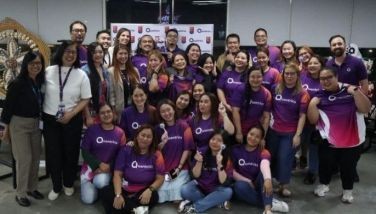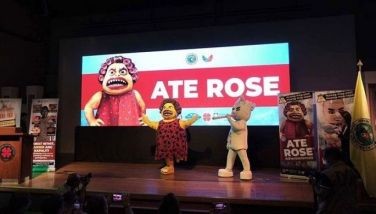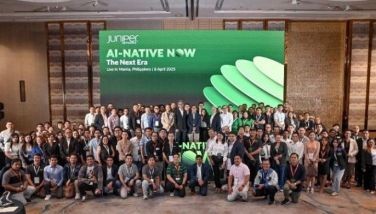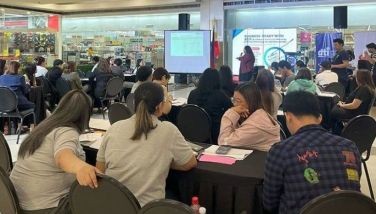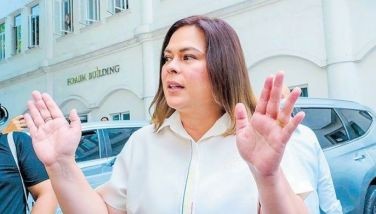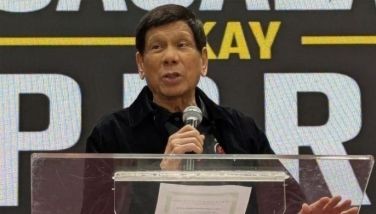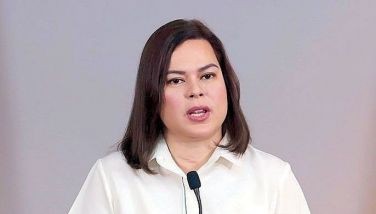Populist politics

The easiest thing to do during an election campaign is for candidates to say anything that seems simple and popular. It is disappointing that some presidential candidates will turn back hard won reforms of the Duterte administration.
The worst part is that these candidates will go back to the old discredited system that has not worked for decades. Insisting on a failed strategy has to be plainly stupid. But oversimplified views will get politicians elected.
That’s what is happening to the Rice Tariffication Law (RTL). It is easy to adopt the populist stance that the RTL is a failure. These politicians are ignoring the fact that RTL has kept the retail price of rice at levels that helped the government control food inflation during the pandemic.
Sure, there are many things that the implementing agencies could have done better. But it has been less than two years and they also had to struggle with an entrenched rice cartel that wants RTL to fail, even as they abuse it.
Restoring the role of the National Food Authority not just as a rice importer, but also as a regulator of rice prices and authorizing it to buy all the farmers’ harvest at the support price of P19 per kilogram is not going to work.
Agriculture Undersecretary Fermin Adriano, an agricultural economist, says that simple arithmetic will show the campaign promise of requiring the government to buy all of the harvests at P19 per kilogram is beyond the means of our government to carry out.
“We have an average harvest of around 19 million metric tons annually. Converted into kilos, this amounts to 19 billion kilos. At the support price of P19 per kilo, the amount needed by the government to buy all the palay (unhusked rice) harvest is P361 billion!
“The budget of the Department of Agriculture (DA) is only around P90 billion!
“Even assuming that the government buys only half of the palay harvest, it will need around P180 billion. And if a quarter is bought, it will need P90 billion! This means the entire budget of the DA is going to rice procurement. What then will happen to the other agricultural commodities we are producing?
“On top of buying the palay harvest of our farmers, they also promise to provide free fertilizer, which will cost no less than P30 billion to be able to reach a substantial number of tillers and to meet the rising fertilizer cost.
“Not to forget the promise that they will also provide free irrigation, which means that they have to increase the current budget of the National Irrigation Administration, which is around P32 billion, as it covers only less than two million hectares of our more than four million hectares of lands devoted to palay cultivation.
“Where will the money come from?”
Candidates do not have to explain how they will implement their proposals… where to get the money. Will they raise taxes? But that’s not popular either. Will the government borrow some more? But our government is on the verge of over borrowing already.
So it is bahala na where the money will come from. The important thing is to win the election first. Besides, people will forget the promises quickly and are normally resigned to expect nothing much from the officials they elect.
For sure, our agricultural efforts deserve a bigger budget than what it normally gets from Congress. But at a time when we are supposed to bring down our debt to GDP ratio arising from emergency COVID response borrowings, there is no room for unrealistic agricultural programs.
Raising our overall debt will add to inflationary pressure and cause the peso to depreciate. Severe austerity measures may also be necessary to balance the budget and that will eventually lead to the severe contraction of the economy. The next administration will have big money problems as NEDA is now warning.
What has the Duterte administration accomplished with regard to RTL? I asked Finance Secretary Sonny Dominguez how much we have collected in tariffs that are supposed to help the farmers. This is his reply:
From the few months of 2019 and the whole of 2020, the tariff revenue generated by RTL amounted to P27 billion. Some P20 billion was given to RCEF (Rice Competitiveness Enhancement Fund) and more than P7 billion to farmers as cash assistance at P5,000 for each farmer owning two hectares and below.
For 2021, of the P18.841 billion revenue, P10 billion will be given to RCEF as provided by law. According to Agriculture Sec. William Dar, some 1.9 million rice farmers will benefit starting this April.
RCEF is used for farm mechanization, seed distribution, and for credit, extension, and training.
It is also easy for a candidate to say no importation of agricultural products. But we can’t produce all the food we need. Our production cost is often too high, resulting in very high selling prices to consumers.
We really must increase our agricultural productivity to cope with our population growth rate.
Usec. Adriano observed that “Our agricultural productivity growth rate for the last 20 years averaged around one percent. On the other hand, our population growth rate averaged around 1.5 percent. This means that there are more mouths to feed compared to the food that we were able to produce given limited land resources and budget for the agricultural sector.”
Attaining rice self-sufficiency is nice to say in an election campaign. But as the economist and National Scientist Raul Fabella points out, rice self sufficiency is a matter of geography. Our areas that are competitive for rice production are limited. As a result, our cost per cavan is too high.
“You can blame lack of infrastructure and farm-to-market roads till you are blue in the face, but if you do not have steady abundant water and a friendly soil, you will be marginal.”
It is a complex issue and politicians who say stopping importation and letting NFA buy all the produce are fooling the people. Such dishonesty shouldn’t be rewarded by a vote.
Boo Chanco’s email address is bchanco@gmail.com. Follow him on Twitter @boochanco
- Latest
- Trending













